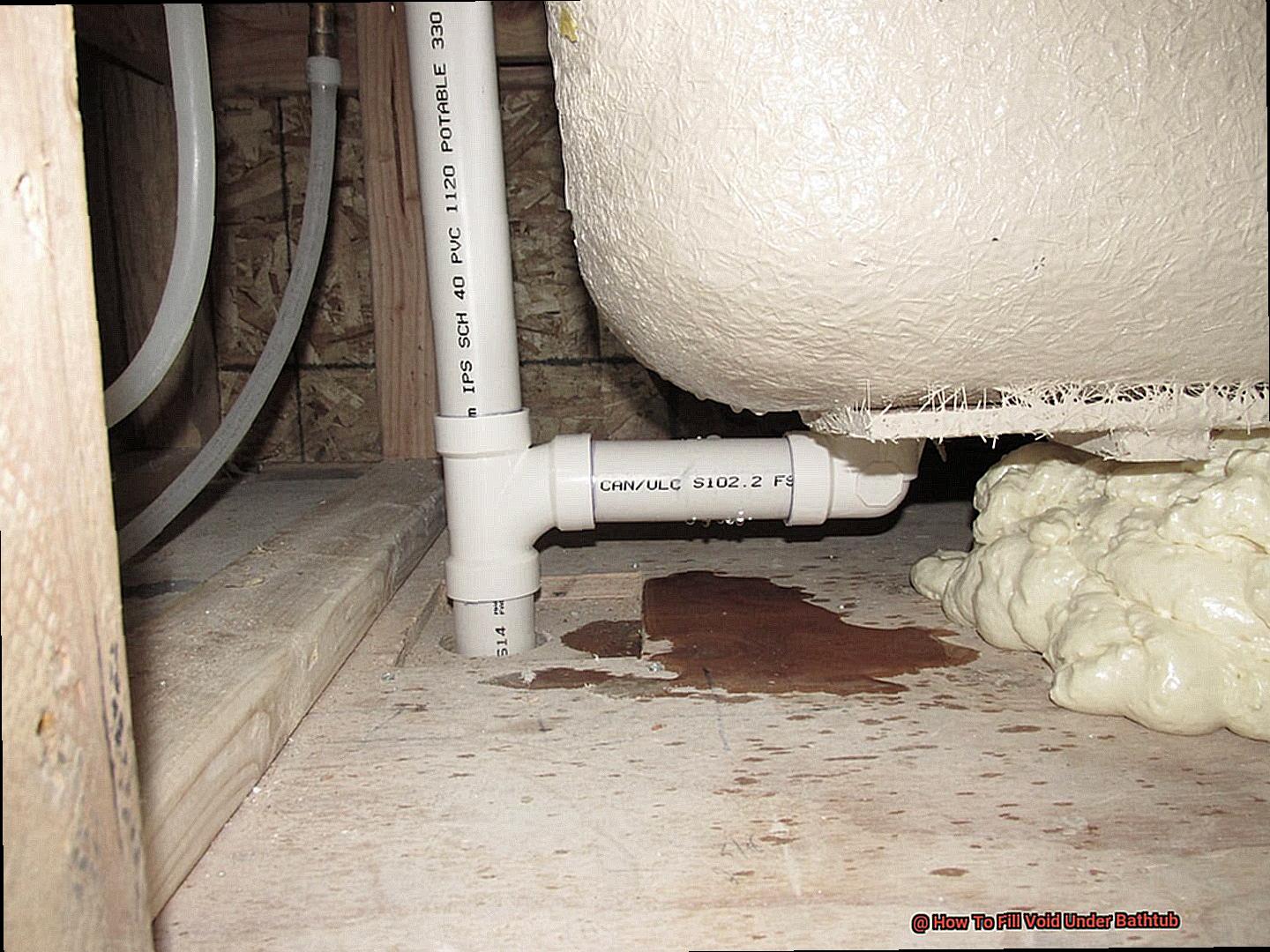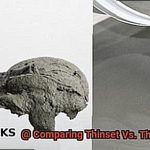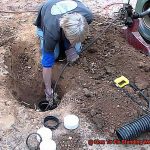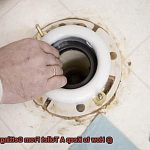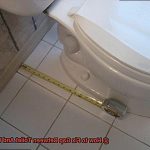Do you dread taking a bath because of the annoying squeaking noise coming from your bathtub?
Or worse, do you feel like your tub is sagging and becoming a potential safety hazard? The culprit behind these issues could be a void under your bathtub – a common problem for homeowners.
This space between the bathtub and subfloor lacks support, causing the tub to move and creak. Not only is it irritating, but it can also lead to more significant problems in the long run.
But don’t worry. There’s an easy solution to this issue.
In this post, we’ll show you how to fill the void under your bathtub and eliminate that pesky squeaking noise for good. We’ll cover the main materials you can use, such as expanding foam or mortar mix, and provide step-by-step instructions for a DIY fix.
Let’s get started now.
Contents
- 1 What Is a Void Under Bathtub?
- 2 Preparing the Area for Filling the Void
- 3 Using Expanding Foam to Fill the Void
- 3.1 Step 1: Remove the access panel.
- 3.2 Step 2: Clean the area. Before applying expanding foam, ensure that you have cleaned the area thoroughly to remove any dirt, debris, or loose material. This ensures that the foam adheres properly. Step 3: Protect surrounding areas.
- 3.3 Step 4: Apply expanding foam.
- 3.4 Step 5: Wait for it to dry.
- 3.5 Step 6: Trim excess foam.
- 4 Applying the Foam Carefully and Evenly
- 5 Waiting for the Foam to Dry Completely
- 6 Benefits of Using Expanding Foam to Fill Voids Under Bathtubs
- 7 Conclusion
What Is a Void Under Bathtub?
If you have an older model or one that wasn’t installed correctly, there’s a good chance that there’s a void waiting to cause trouble.
The void under a bathtub is the empty space between the tub and the floor, and it could be causing more problems than you realize. When not filled, the void can lead to significant structural damage to the bathtub.
Over time, without proper support, the bottom of the tub can start to sag or crack. Imagine taking a relaxing soak only to feel your bathtub giving way under you – not so relaxing anymore.
But that’s not all – unfilled voids can also lead to water leaks. With water seeping into the gap, it can damage the floor and create a breeding ground for mold and mildew.
And unfortunately, pests like mice and insects love to set up shop in dark, undisturbed spaces like the one under your bathtub. So what’s the solution?
Filling the void with expanding foam is the best course of action. This specially designed foam will fill in those gaps and expand as it dries, creating a solid and stable base for your bathtub to sit on.
It’s like giving your tub a cozy mattress to rest on instead of leaving it on a hard, cold floor. To use expanding foam, you’ll need to remove any old caulking or sealant around the edges of the bathtub and clean out any debris or insulation that might be in the way.
Then, simply shake the can well, attach the nozzle, and carefully apply the foam around the edges of the tub. But don’t rush – it takes time for the foam to dry completely.
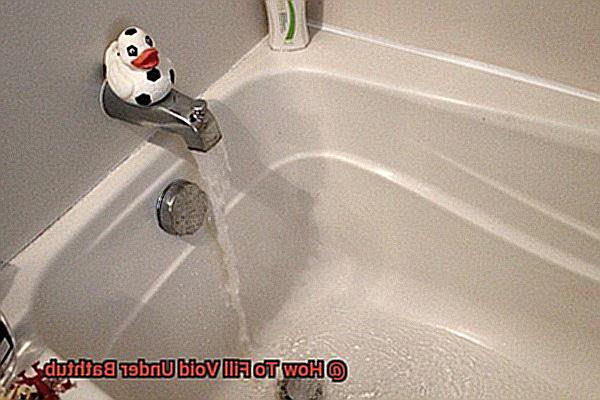
If you’re unsure if your bathtub has a void underneath it or not comfortable doing this yourself, consider hiring a professional plumber or contractor. They can assess the situation and take care of it for you.
Preparing the Area for Filling the Void
When dealing with filling the void under your bathtub, proper preparation is the foundation for success.
You want to make sure that the fill material adheres properly and that the bathtub remains stable and level. So, where do you start?
The first step is to remove any debris or loose material from the area around the void. This could include dirt, rocks, or old filler material.
Think of it like giving your kitchen counters a good wipe-down before cooking up a storm. Next, inspect the bathtub for any signs of damage or wear.
If there are any cracks or chips in the bathtub, these should be repaired before proceeding. Imagine fixing up a few dings on a vintage car before taking it out for a spin.
Once the area is clean and the bathtub is in good condition, it’s time to prepare the fill material. There are several different types of fill materials to choose from, including expanding foam, sand, and concrete.
If you’re using expanding foam, make sure to read the instructions carefully and follow them closely. This type of material can expand significantly, so it’s important to apply it correctly to avoid any issues later on.
Think of it like following a complex recipe for a fancy dish. If you’re using sand or concrete, mix it according to the manufacturer’s instructions and pour it into the void.
Be sure to spread it evenly and compact it as much as possible to ensure that it adheres properly. Think of it like building a sandcastle – you want to pack the sand tightly for stability.
Finally, allow your fill material to dry completely before using your bathtub again. This may take several hours or even a few days depending on the type of material used.
Using Expanding Foam to Fill the Void
Don’t worry, as there is a simple and affordable solution to these common problems- expanding foam.
Expanding foam is a versatile polyurethane foam that expands and hardens upon contact with air. This makes it the perfect material for filling the void under your bathtub.
Not only is it easy to use, but it can also be found at most home improvement stores. The process of using expanding foam to fill the void under your bathtub is simple and straightforward.
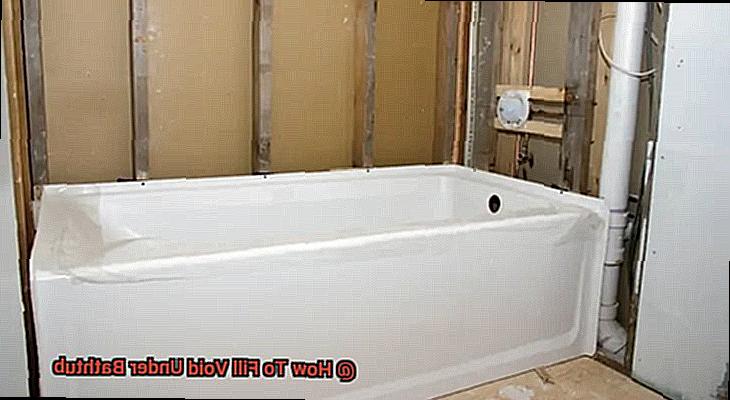
All you need to do is follow these steps:
Step 1: Remove the access panel.
You will need to remove the access panel located on the side of the bathtub to gain access to the void underneath.
Step 2: Clean the area.
Before applying expanding foam, ensure that you have cleaned the area thoroughly to remove any dirt, debris, or loose material. This ensures that the foam adheres properly.
Step 3: Protect surrounding areas.
While expanding foam can be messy and challenging to clean up once it dries, you can avoid any damage by protecting surrounding areas with plastic sheets or tape.
Step 4: Apply expanding foam.
Shake the can of expanding foam well before using it.
Then, slowly apply the foam into the void underneath the bathtub. It’s essential not to overfill the space as the foam will expand and harden.
Step 5: Wait for it to dry.
Once you have applied the expanding foam, give it time to dry completely before replacing the access panel.
This usually takes about 24 hours.
Step 6: Trim excess foam.
After the foam has dried, trim any excess with a knife or saw to create a level surface. Be careful not to damage any pipes or wires running underneath.
Using expanding foam is a quick and easy way to fill the void under your bathtub. However, it is essential to use caution when working with this material as it can be messy and difficult to remove once it dries.

If you are unsure about using expanding foam or have any concerns, it may be best to consult a professional plumber or contractor.
Applying the Foam Carefully and Evenly
Applying foam insulation evenly underneath the tub provides that foundation. So, let’s get started.
First things first, choose the right type of foam insulation for your project. Closed-cell foam is typically more expensive but provides better support and insulation, making it the ideal choice for filling voids under a bathtub.
Once you have selected the appropriate foam insulation, it’s time to start applying it carefully and evenly. Shake the canister well and attach the nozzle to the top.
Hold the canister upside down and spray the foam onto the surface below the bathtub. Start at one corner and work your way around the tub, applying the foam in small sections to ensure even coverage.
Remember that foam insulation expands as it dries, so don’t overfill the void underneath your bathtub. Aim to fill about 80% of the void, leaving some room for expansion while still providing adequate support.
After applying the foam, allow it to dry completely before continuing with any additional steps. This may take several hours or even overnight depending on the type of foam insulation used.
It’s worth the wait for a long-lasting foundation. In conclusion, when it comes to filling voids under your bathtub, applying foam insulation carefully and evenly is crucial.
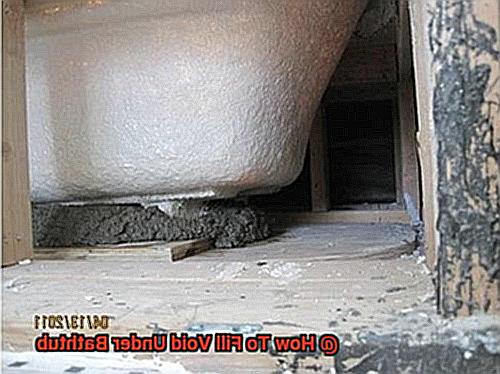
Waiting for the Foam to Dry Completely
Installing a bathtub is an exciting project that can transform your bathroom into a relaxing oasis.
However, rushing through key steps could compromise the stability of your installation and cause future headaches. One crucial step is waiting for the foam to dry completely.
Similarly, you must let the closed-cell foam insulation expand and dry fully before proceeding with your installation. This waiting period can vary depending on the type of foam used and humidity levels in your area, but it’s best to wait at least 48 hours to be safe.
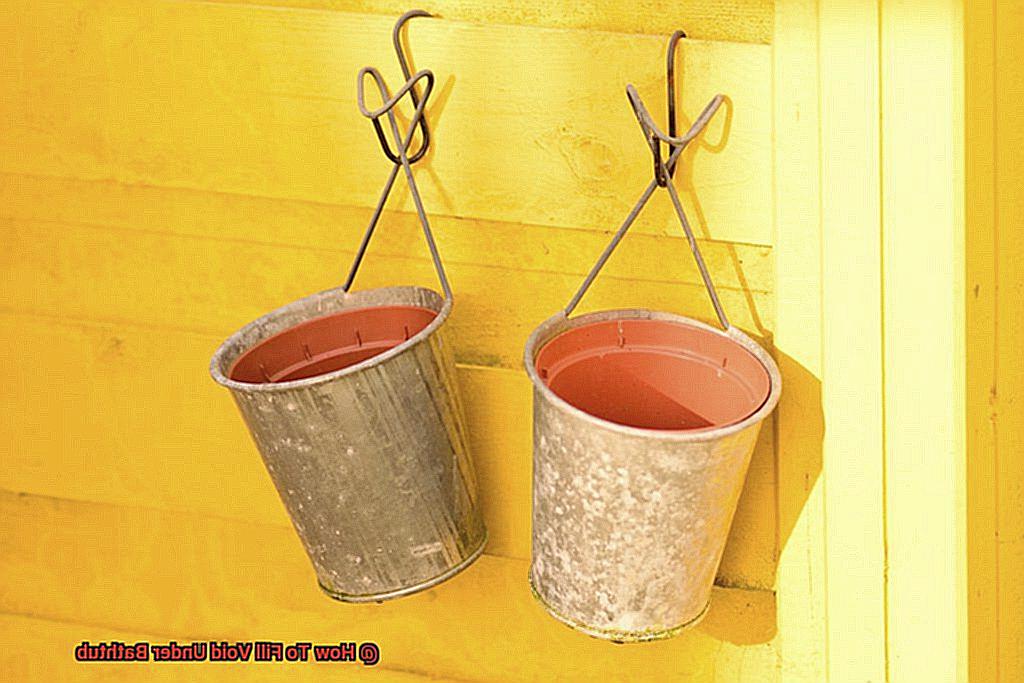
During this waiting period, it’s essential to keep the area around your bathtub clear and free from obstructions. Any disturbance to the foam before it has fully dried could cause it to collapse or shrink, compromising the stability of your installation.
Checking on the foam regularly is also a good idea to ensure that it’s expanding and drying evenly. Waiting for the foam to dry completely might seem like a tedious task, but it’s crucial for ensuring a stable and long-lasting installation.
Benefits of Using Expanding Foam to Fill Voids Under Bathtubs
Expanding foam is a popular and effective solution that offers a myriad of benefits over traditional filling materials such as sand or concrete.
One of the most significant advantages of using expanding foam is its ease of use. With just a canister and nozzle, you can easily spray the foam directly into the gap under the bathtub.
Once it expands and cures, it creates a strong and stable base for the tub in no time at all. Another benefit of expanding foam is its lightweight and easy-to-handle nature.
Unlike heavy sand or concrete, which can be challenging to maneuver, expanding foam can be effortlessly transported and applied, saving precious time and effort during installation. Moisture resistance is another area where expanding foam excels.
Water damage can cause traditional filling materials to shift or settle over time, leading to an unstable bathtub. Expanding foam resists water damage and provides long-lasting support for the tub, giving you peace of mind.
Lastly, expanding foam also helps reduce noise and vibrations. The foam creates a cushioning effect that absorbs sound and vibrations, making your bathtub quieter and more comfortable to use.
iigbr-tIM9I” >
Conclusion
In conclusion, dealing with a void under your bathtub can be a frustrating problem that can lead to safety hazards and annoying squeaking noises.
However, filling the void is an easy and affordable solution that will eliminate these issues. Expanding foam is the perfect material for filling the void as it expands and hardens upon contact with air, creating a solid and stable base for your bathtub.
It’s important to prepare the area properly before applying expanding foam by removing any debris or loose material and protecting surrounding areas. When applying expanding foam, it’s crucial to do so carefully and evenly to ensure your bathtub remains secure for years to come.
Using expanding foam over traditional materials such as sand or concrete has numerous benefits including ease of use, lightweight nature, moisture resistance, and noise reduction.
You may also like:




